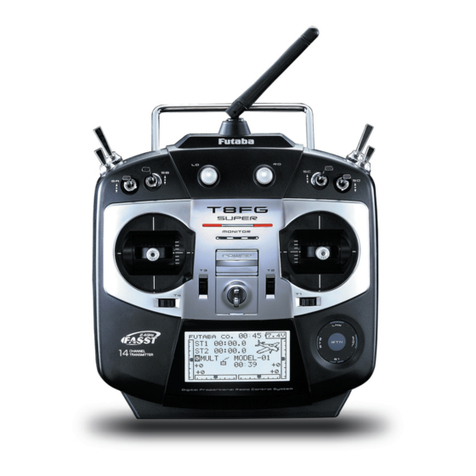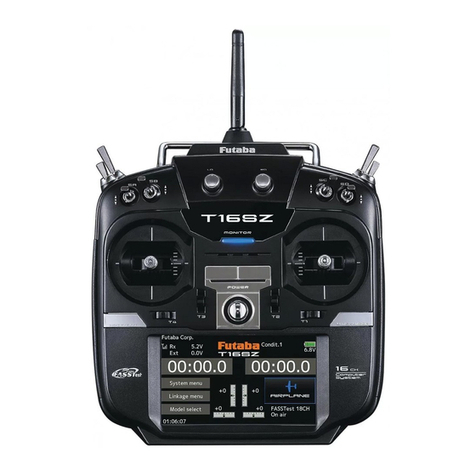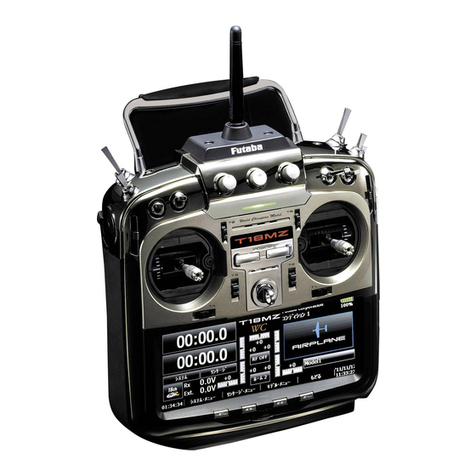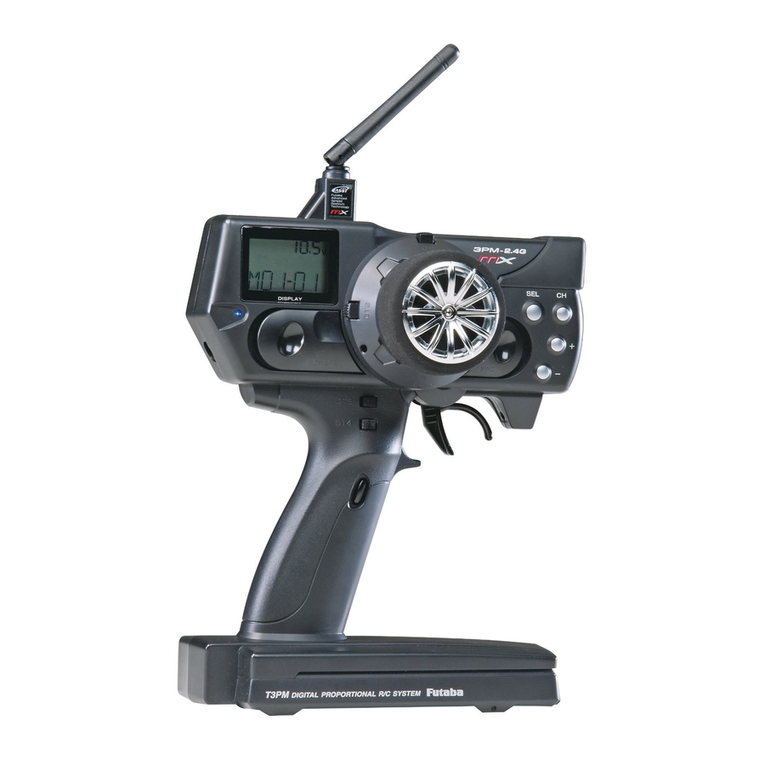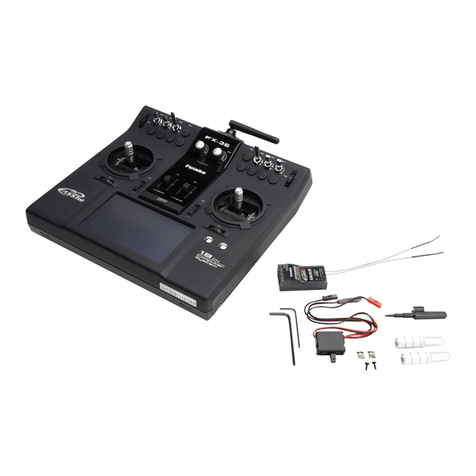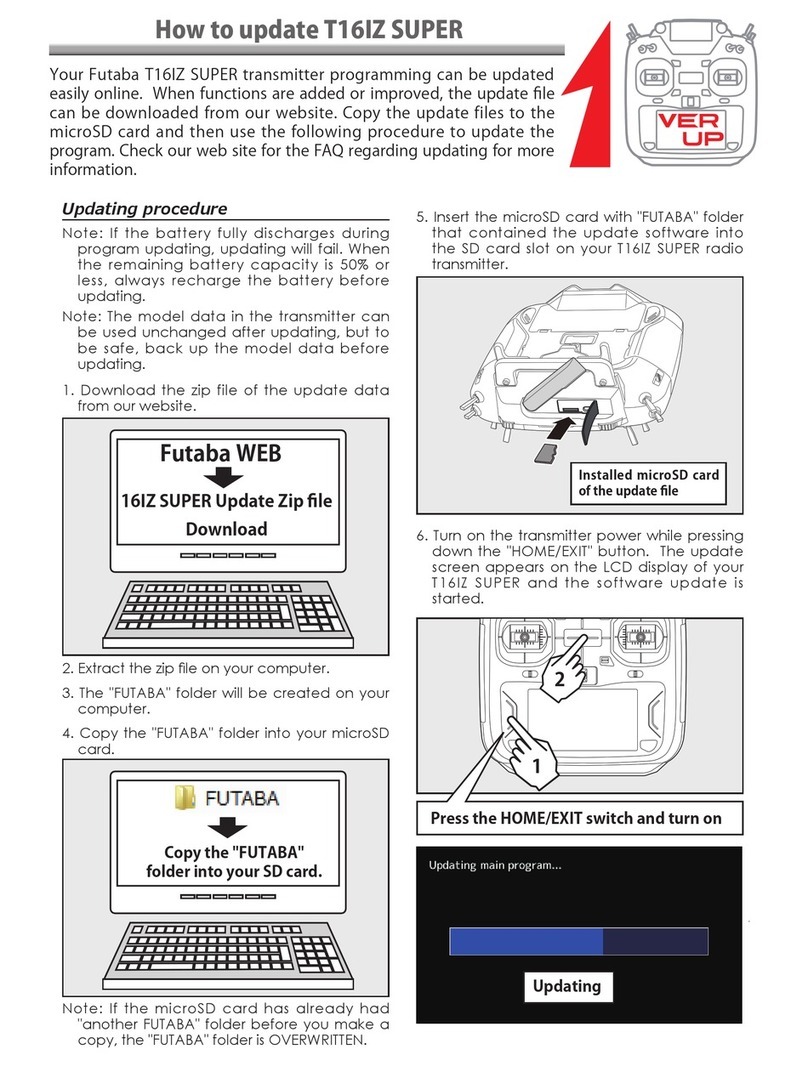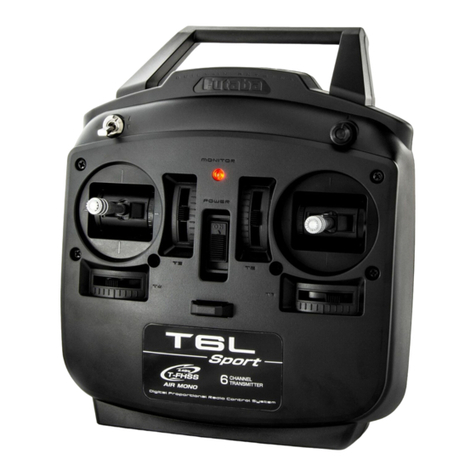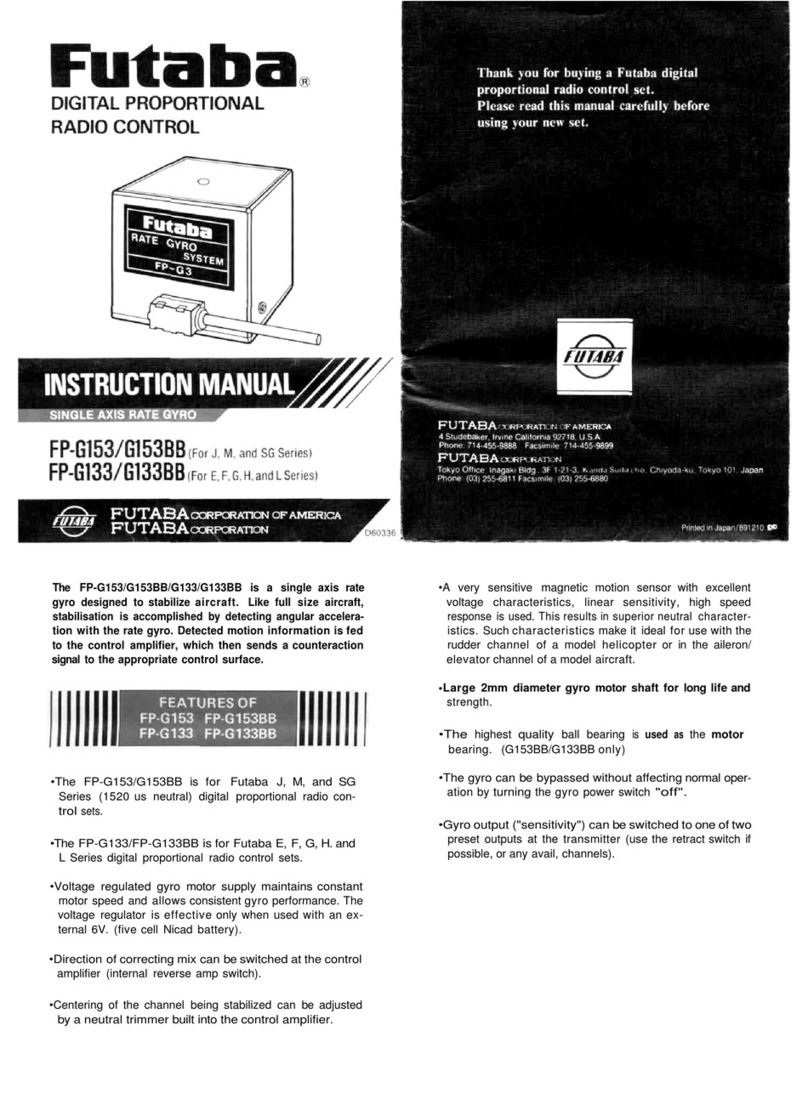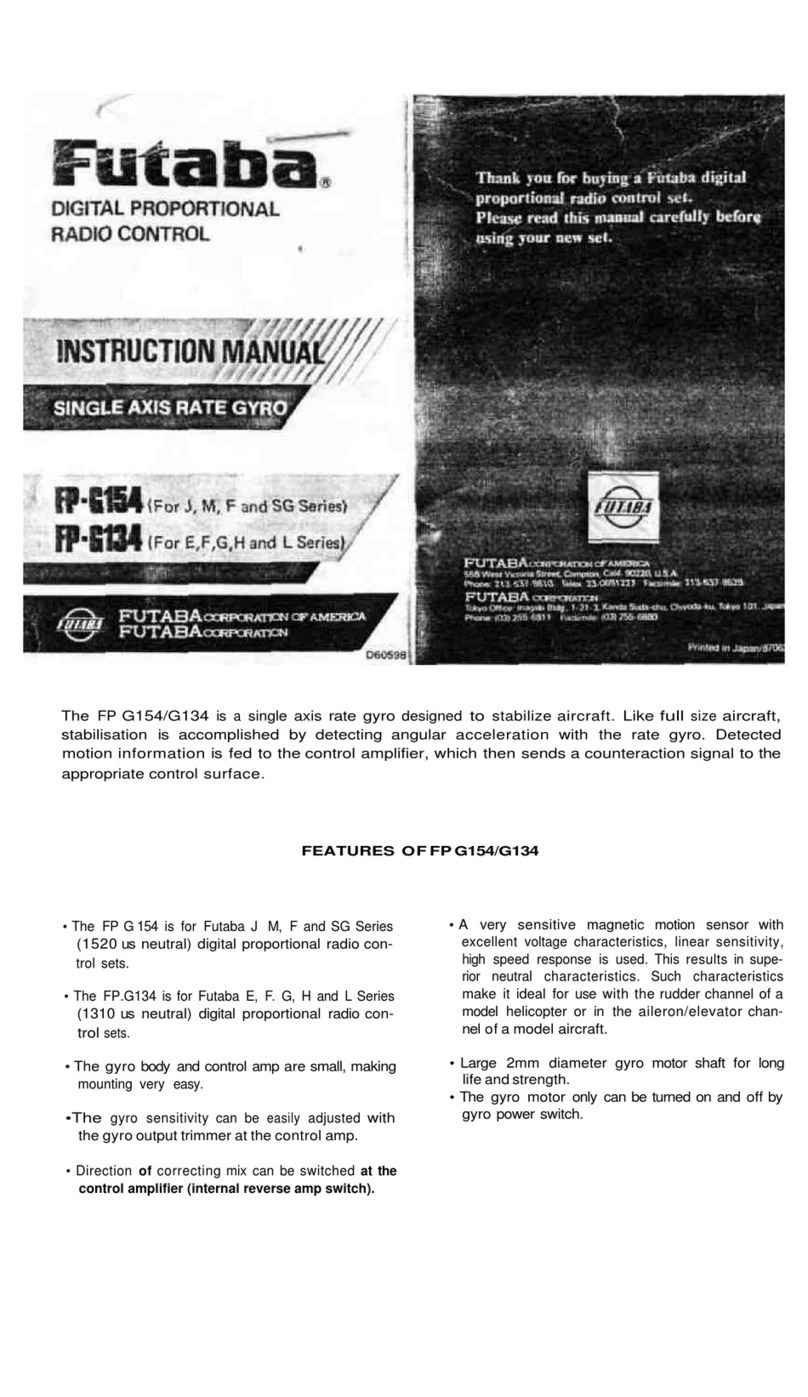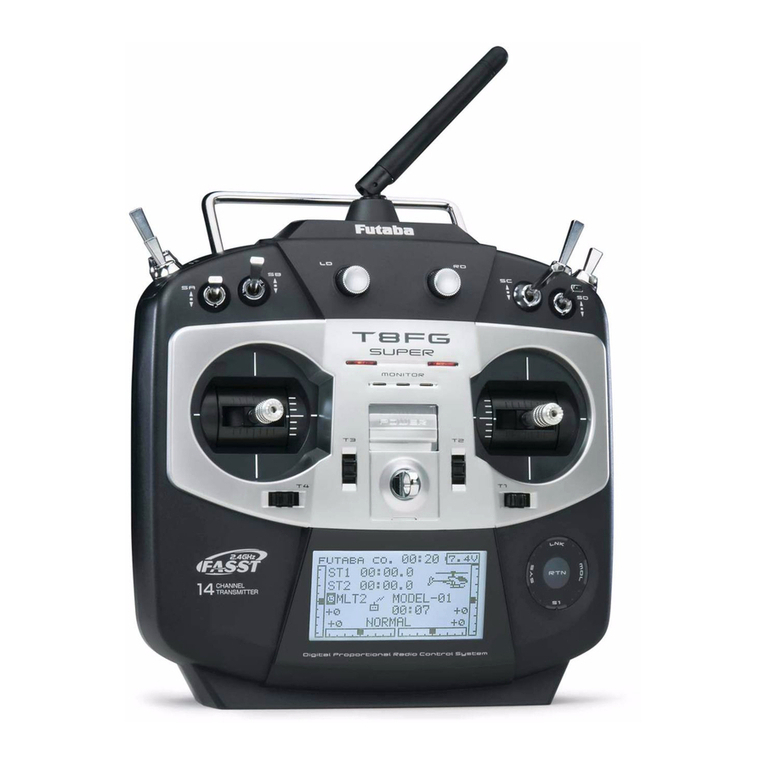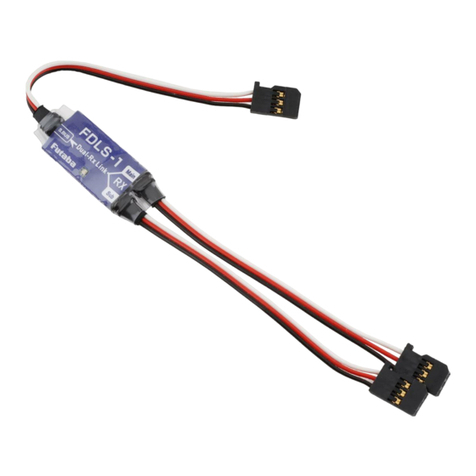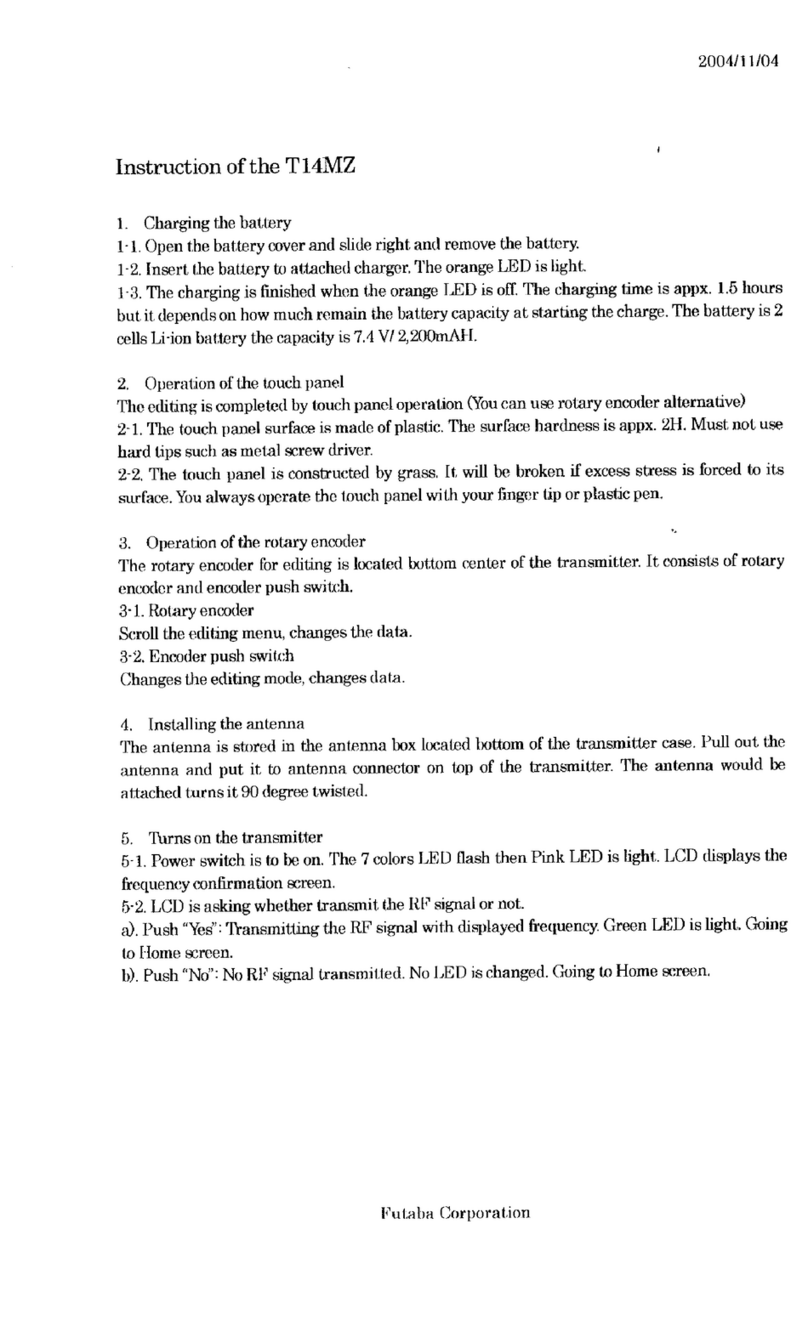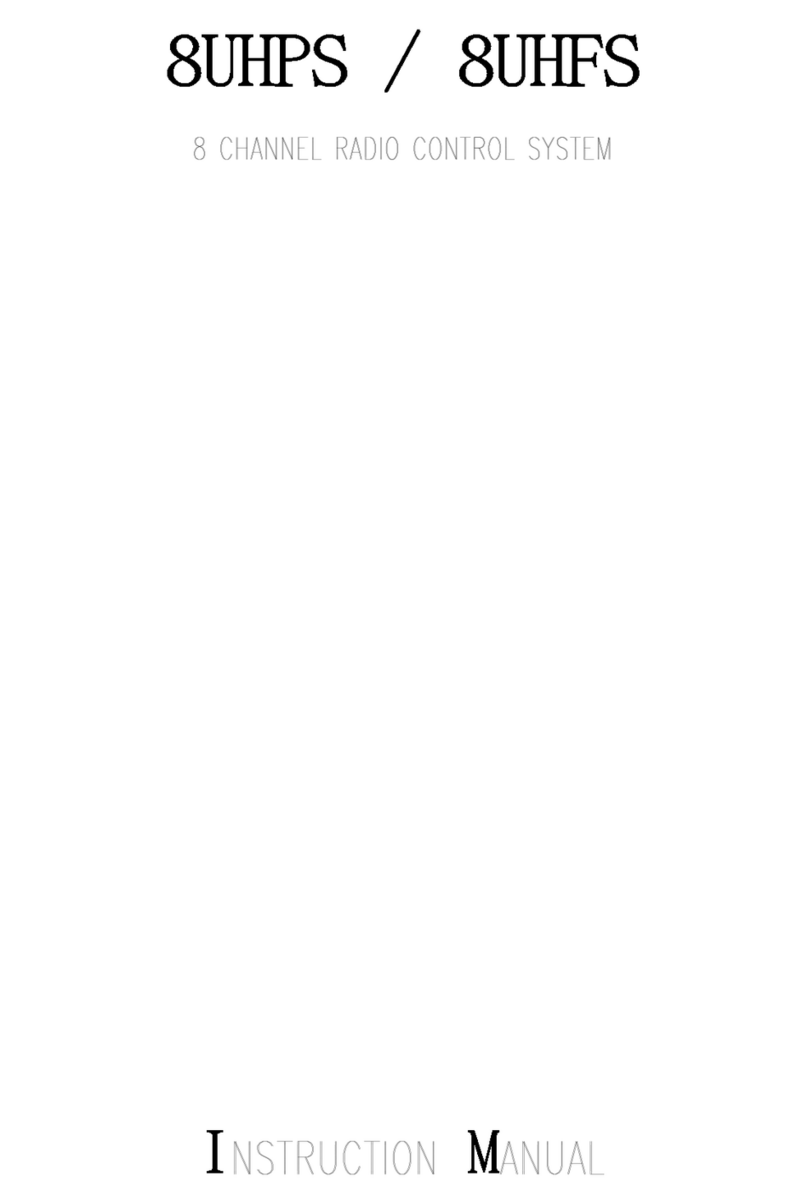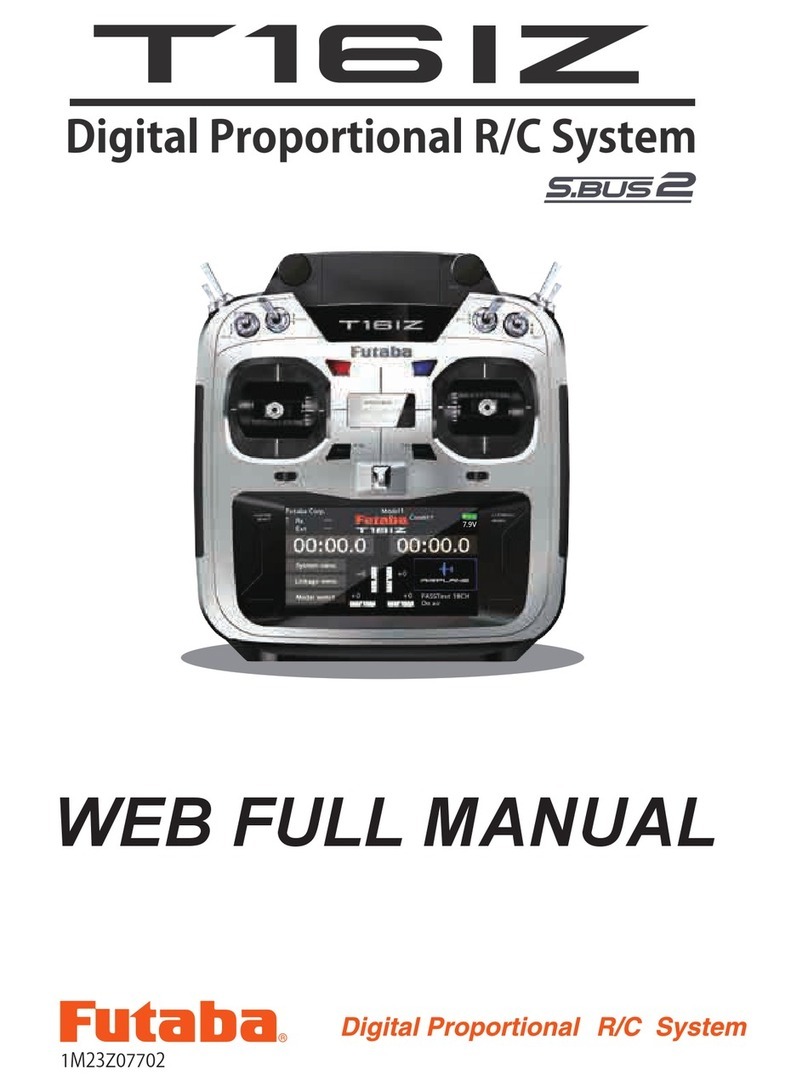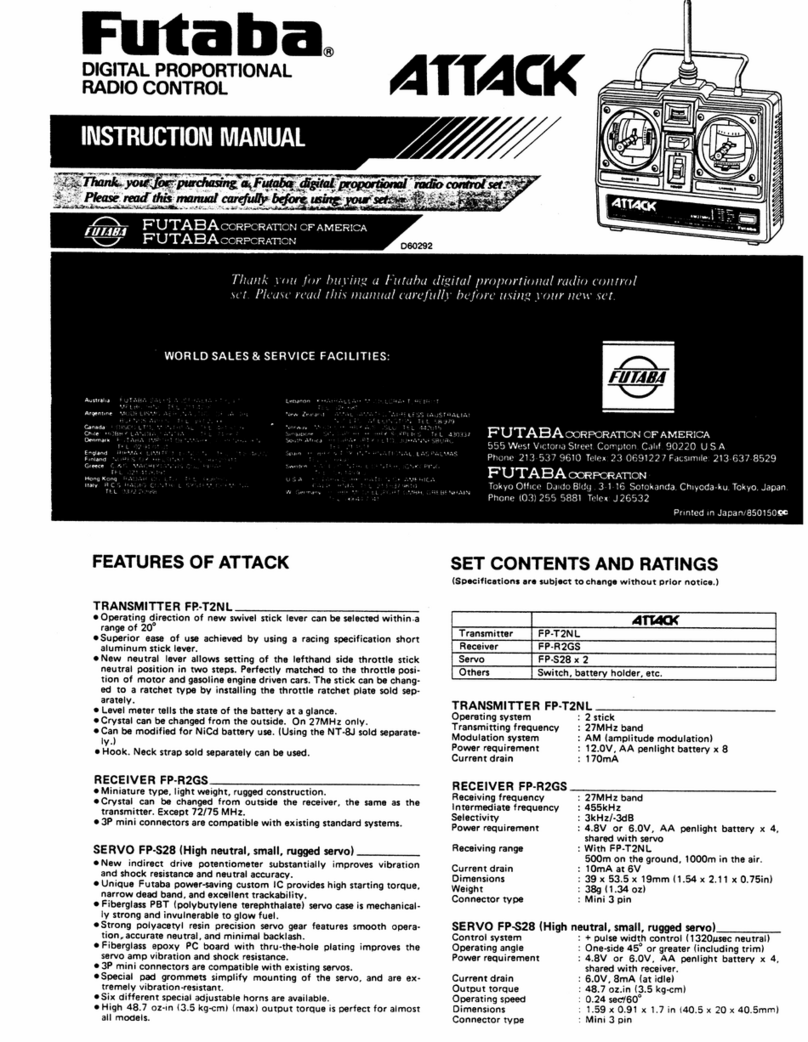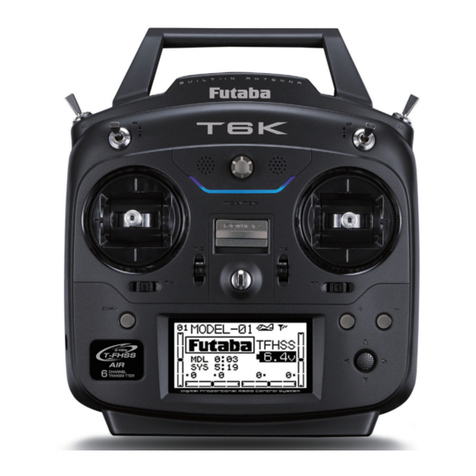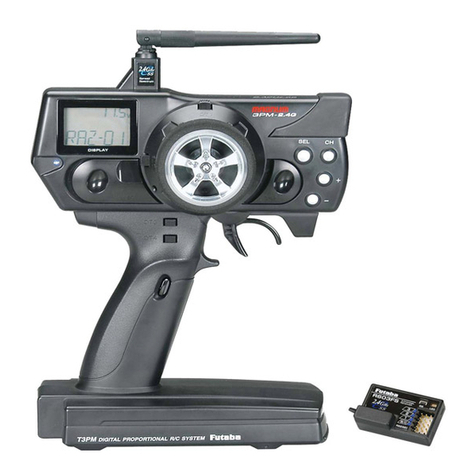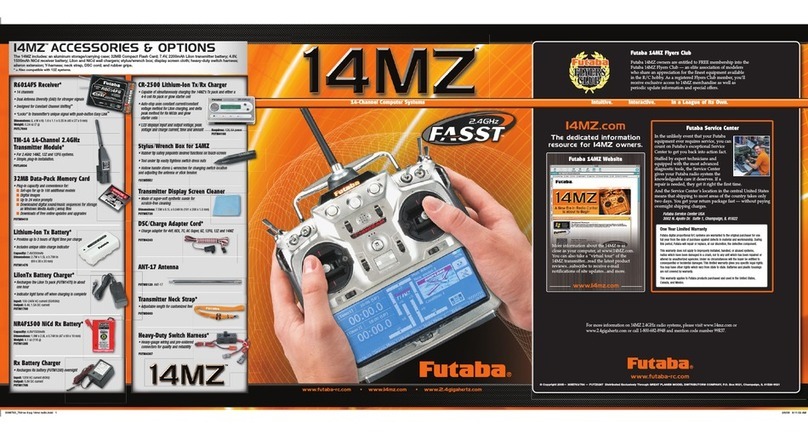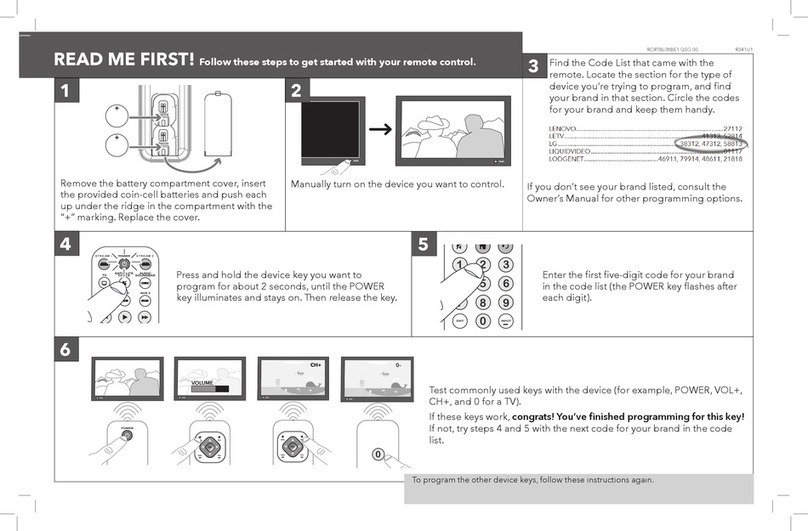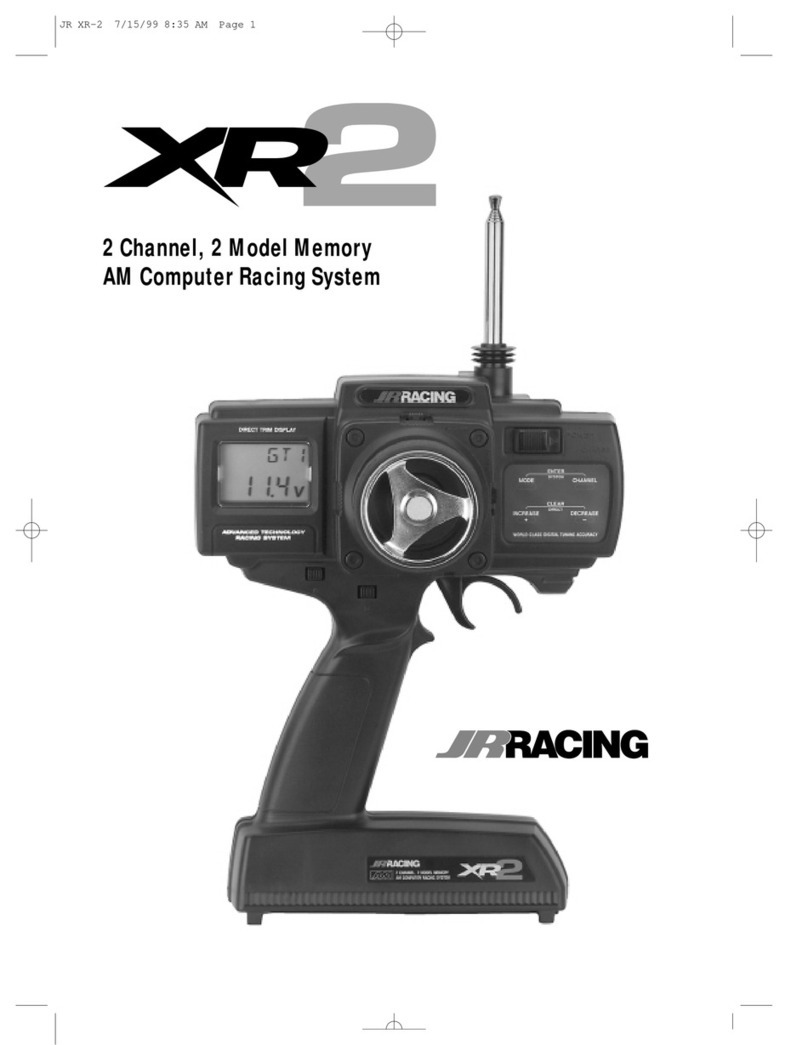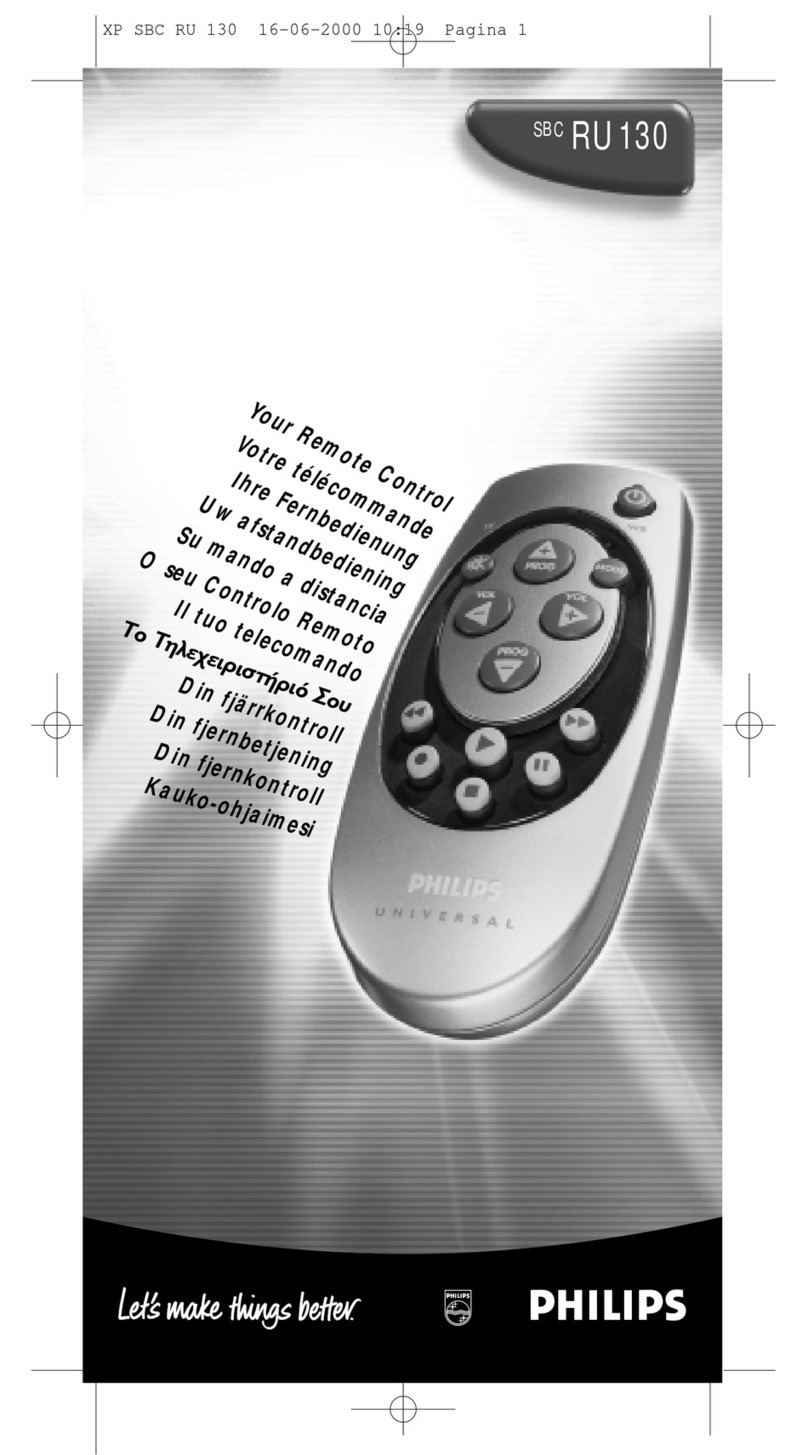
8< Introduction >
Donotflyatthefollowingplaces:
■ Nearanotherradiocontrolflyingfield.
■ Nearorabovepeople.
■ Nearhomes,schools,hospitalsorotherplaceswhere
peoplecongregate.
■ Nearhighvoltagelines,highstructures,orcommuni-
cationfacilities.
Whensettingthetransmitterontheground
duringflightpreparations,donotstanditupright.
■Thetransmittermaytipover,thesticksmaymoveand
thepropellerorrotormayrotateunexpectedlyand
causeinjury.
Donottouchtheengine,motor,orESCduring
andimmediatelyafteruse.
■Theseitemsmaybecomehotduringuse.
Forsafety,flysothattheaircraftisvisibleatall
times.
■Flyingbehindbuildingsorotherlargestructureswill
notonlycauseyoutolosesightoftheaircraft,butal-
sodegradetheRFlinkperformanceandcauselossof
control.
Fromthestandpointofsafety,alwayssetthe
failsafefunction.
■Inparticular,normallysetthethrottlechanneltoidle.
Forahelicopter,setthethrottlechanneltomaintaina
hover.
Whenflying,alwaysreturnthetransmitterset-
upscreentotheHomescreen.
■Erroneousinputduringflightisextremelydangerous.
Alwayschecktheremainingcapacityofthe
transmitterandreceiverbatteriesbeforeeachfly-
ingsessionpriortoflight.
■Lowbatterycapacitywillcauselossofcontrolanda
crash.
Alwayscheckoperationofeachcontrolsurface
andperformarangetestbeforeeachflyingses-
sion.Also,whenusingthetrainerfunction,check
theoperationofboththeteacherandstudent
transmitter.
■ Evenoneincorrecttransmittersettingoraircraftabnor-
malitycancauseacrash.
Beforeturningonthetransmitter:
1.Alwaysmovethetransmitterthrottlestickpositionto
theminimum(idle)position.
2.Turnonthetransmitterfirstandthenthereceiver.
Whenturningoffthetransmitter'spower
switchaftertheengineormotorhasstopped
(stateinwhichitwillnotrotateagain):
1.Turnoffthereceiverpowerswitch.
2.Thenturnoffthetransmitterpowerswitch.
■Ifthepowerswitchisturnedon/offintheoppositeor-
der,thepropellermayrotateunexpectedlyandcause
aseriousinjury.
■Alsoalwaysobservetheaboveorderwhensettingthe
failsafefunction.
Whenadjustingthetransmitter,stopthe
engineexceptwhennecessary.Inthecaseofa
motor,disconnectthewiringthatallowsittocon-
tinueoperation.Whendoingso,pleaseexercise
extremecaution.Ensurethattheaircraftisse-
curedandthatitwillnotcomeintocontactwith
anythingoranyone.Ensurethatthemotorwill
notrotatepriortomakinganyadjustments.
■Unexpectedhighspeedrotationoftheenginemay
causeaseriousinjury.
Donotrechargeabatterythatisdamaged,de-
teriorated,leakingelectrolyte,orwet.
Donotusethechargerinapplicationsother
thanasintended.
Donotallowthechargerorbatterytobecome
wet.
■Donotusethechargerwhenitoryourhandsarewet.
Donotusethechargerinhumidplaces.
Donotshortcircuitthebattery.
Donotsolder,repair,deform,modify,ordisas-
semblethebatteryand/orbatterycharger.
Donotdropthebatteryintoafireorbringit
nearafire.
BatteryandChargerHandlingPrecautions
DANGER
Donotchargeandstorethebatteryindirect
sunlightorotherhotplaces.
Donotchargethebatteryifitiscoveredwith
anyobjectasitmaybecomeveryhot.
Donotusethebatteryinacombustibleenvi-
ronment.
■Thecombustiblesmaycouldigniteigniteandcausean
explosionorfire.
Alwayschargethebatterybeforeeachflying
session.
■ Ifthebatterygoesdeadduringflight,theaircraftwill
crash.
Chargethebatterywiththededicatedcharger
suppliedwiththeset.
